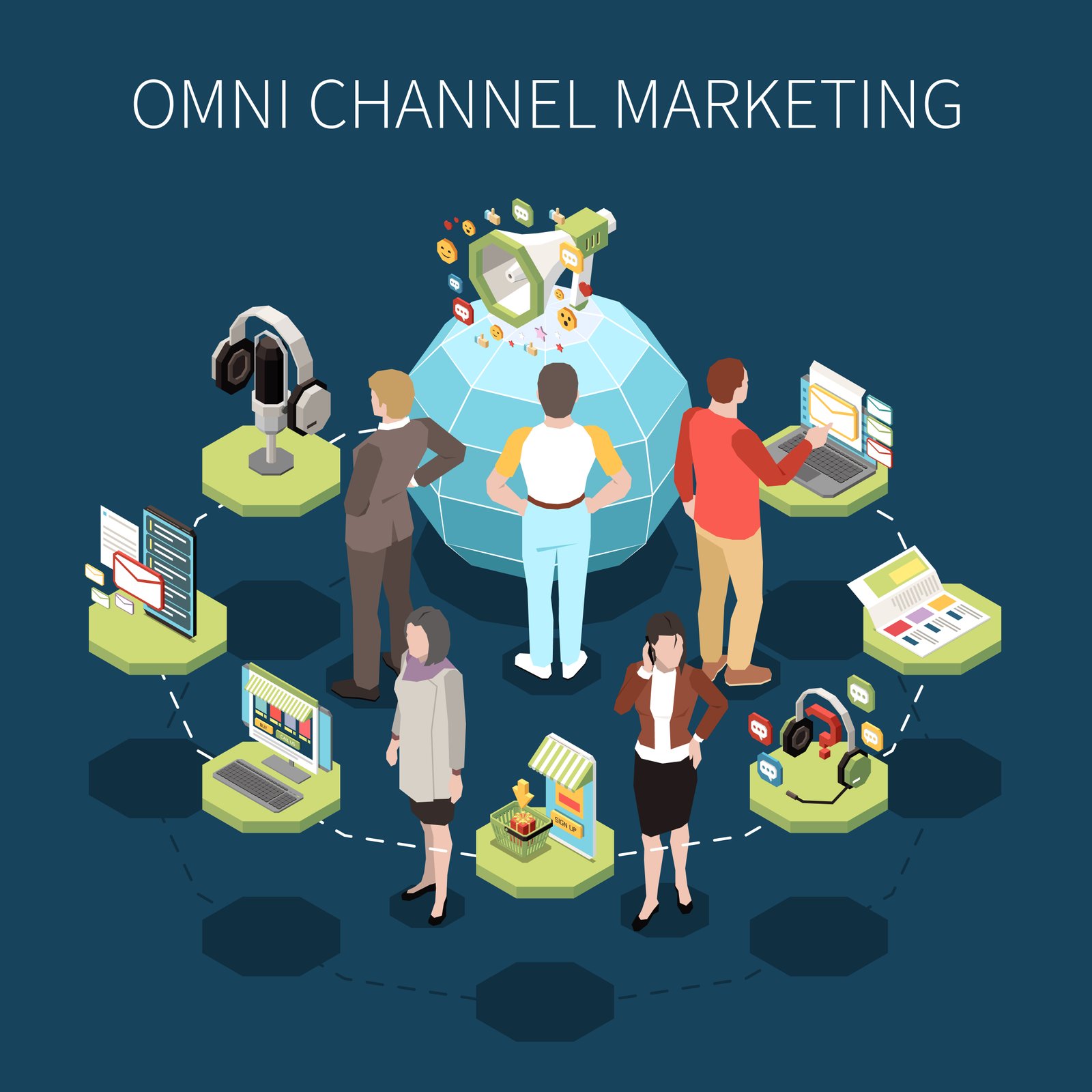
Omnichannel Marketing in 2025: How to Build Seamless Customer Journeys
In a world where your customers are constantly switching between devices, platforms, and touchpoints, a single-channel marketing strategy just doesn’t cut it anymore. Welcome to omnichannel marketing, a must-have strategy in 2025 for any brand that wants to stay relevant, connected, and conversion-focused.
This blog explores what omnichannel marketing means today, why it’s different from multichannel, and how you can create seamless customer journeys that drive engagement and sales.
What Is Omnichannel Marketing?
Omnichannel marketing is the practice of delivering a consistent and unified brand experience across all platforms, whether it’s social media, email, your website, mobile apps, or even physical stores. The goal? To meet your audience wherever they are and maintain continuity across every interaction.
Multichannel means you're present on several platforms. Omnichannel means those platforms are connected and talk to each other.
Why Omnichannel Is Essential in 2025?
- Customer expectations have evolved.
People want fast, consistent, and personalized experiences, whether they’re scrolling Instagram, opening emails, or chatting with support on WhatsApp. - Data is more powerful and more expected.
With AI-driven tools, customers know you can personalize their experience. If you don’t, your competitors will. - Attention spans are short.
Fragmented marketing loses interest fast. A seamless journey keeps customers moving forward.
How to Build a Successful Omnichannel Strategy
Let’s break it down into actionable steps.
Understand Your Customer Journey
Start by mapping your typical buyer’s journey. Ask:
- Where do they discover your brand?
- How do they research products?
- What influences their decisions?
- What’s their post-purchase experience like?
Use tools like Google Analytics 4, Hotjar, or HubSpot to track behavior across devices.
Unify Your Data Sources
Your CRM, website, email tool, and ad platforms shouldn’t work in silos. Choose a centralized platform or integrate your tools so that data flows freely between them. Recommended tools:
- HubSpot or Zoho for CRM & automation
- Segment or Zapier for data syncing
- Klaviyo for personalized email and SMS
With a unified view of the customer, you can deliver consistent messaging and tailored experiences.
Personalize Across Channels
Use the data you’ve gathered to craft personalized messages based on behavior, location, and preferences.
Example:
- Someone clicks an ad for sneakers they get a follow-up email with a size guide
- They browse a product but don’t buy, they see a retargeting ad with a 10% discount
- They buy you send a thank-you message and suggest matching socks
This isn’t just marketing, it’s experience design.
Create Platform-Specific Content With a Unified Message
Don’t copy-paste the same message everywhere. Tailor it for each platform while keeping the core message and vibe consistent.- Instagram: Use reels and visuals to grab attention
- Email: Add value with offers, guides, or updates
- Website: Use dynamic content blocks that change based on user behavior
- SMS: Send reminders or exclusive offers
Leverage AI and Automation
AI tools are the secret weapon behind smart omnichannel campaigns in 2025.
Use them to:
- Predict user behavior with AI-powered analytics
- Automate campaign flows like abandoned cart series
- Recommend products dynamically
- Chat in real-time across multiple platforms, such as WhatsApp, Messenger, and your site
Tools like ActiveCampaign, Drift, or Tidio make automation feel human, which is the whole point.
Measure What Matters
Tracking omnichannel performance can be tricky, but essential. Key metrics to monitor include:
- Customer Lifetime Value (CLV)
- Average Time to Purchase
- Conversion Rate by Channel
- Email/SMS Open and Click Rate
- Net Promoter Score (NPS)
Create custom dashboards with tools like Looker Studio (formerly Data Studio) to keep it all in one place.
Real-Life Example: Sephora’s Omnichannel Success
Beauty giant Sephora is one of the best in the omnichannel game. Their mobile app connects with their in-store experience, allowing users to:
- Scan products in-store to see reviews
- Redeem loyalty points online or offline
- Receive personalized recommendations based on past purchases
Receive personalized recommendations based on past purchases/p>
Final Thoughts
YouTube, TikTok, and Instagram Reels are being indexed more frequently. Videos are now showing up in Google’s SERPs, making video SEO essential.
So whether you’re a solo marketer or a growing team, now’s the time to connect the dots, sync your channels, and start thinking beyond the funnel.

